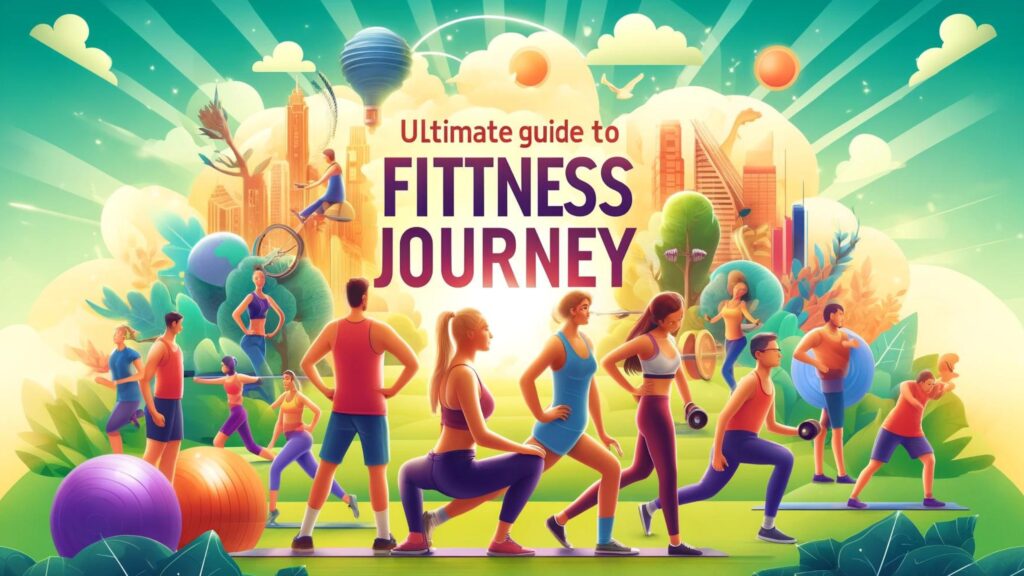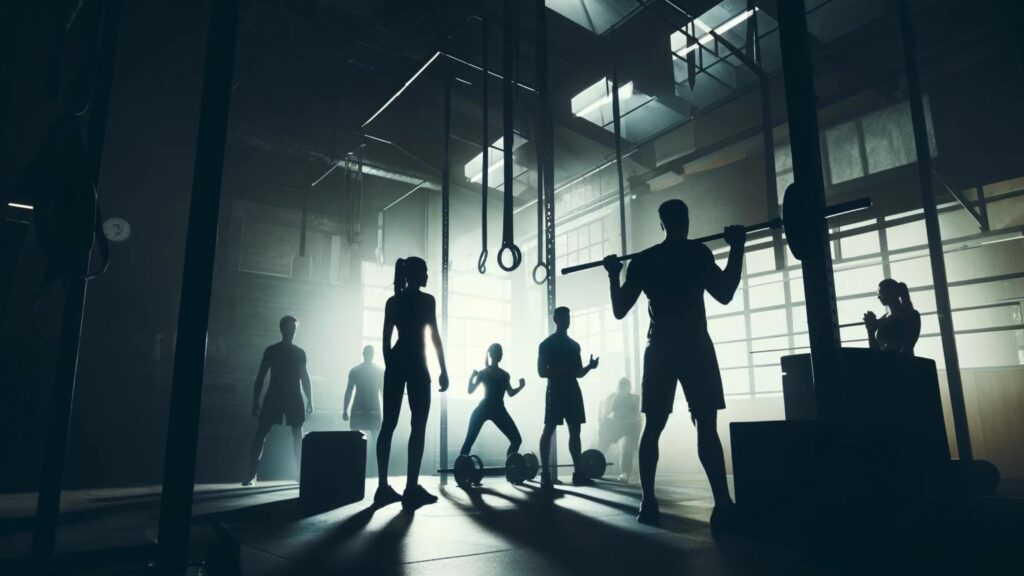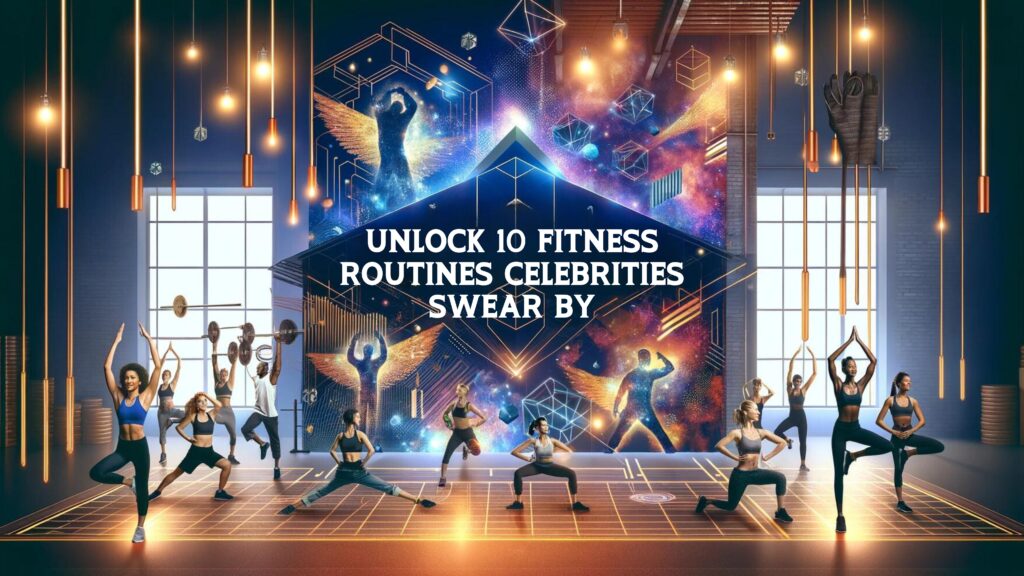Starting a fitness journey can feel like you’re navigating uncharted territory. With “Physical Fitness: The Ultimate Guide to Getting Started,” we hope to serve as your compass, providing guidance and clarity. Whether you’re a complete beginner or looking to improve your routine, this guide lays out the fundamental strategies that will enable you to build a strong fitness plan. Here, we go over the fundamentals of developing a sustainable routine, incorporating balanced workouts, and reaping the profound benefits of a fit and active lifestyle. Allow this guide to illuminate your path to wellness, making your fitness journey both rewarding and achievable.
- General Fitness Questions
- What are the key components of physical fitness?
- How frequently should I exercise to increase my physical fitness?
- What are the best exercises to improve overall physical fitness?
- Can physical fitness affect mental health?
- What is the ideal duration for a physical fitness session?
- How does aging affect physical fitness?
- What role does diet play in sustaining physical fitness?
- Do you have any quick tips for improving physical fitness?
- What are the risks of excessive exercise?
- How can I assess my physical fitness level?
- What's the difference between aerobic and anaerobic exercise?
- How can I keep myself motivated to stay fit?
- What benefits does stretching have for physical fitness?
- How can beginners increase their physical fitness?
- Is yoga effective for improving physical fitness?
- Which are the best fitness apps and tools?
- Workout details and planning
- How does hydration impact physical fitness?
- What are some common physical fitness goals?
- Can physical fitness help to reduce stress?
- What are the best ways to lose weight through fitness?
- How do you strike the right balance between cardio and strength training?
- What constitutes safe physical fitness practices?
- How frequently should I change my workout routine?
- What is the optimal time of day for physical activity?
- Can I achieve physical fitness without going to the gym?
- What are the indicators of increased physical fitness?
- Challenges and Solutions for Fitness
- How Can You Break Through Fitness Stalls?
- What injuries are common in physical fitness, and how do you prevent them?
- Is it necessary to have a fitness coach?
- What Are the Best Physical Activities for Older Adults?
- How does physical fitness impact sleep?
- Can physical fitness enhance immune system function?
- How long does it take to see results from physical fitness activities?
- What Are the Best Post-Workout Recovery Techniques?
- How to Fit Fitness into Your Busy Schedule?
- Advanced Fitness and Health
- What are the benefits of group fitness classes?
- Which fitness metrics should I track?
- How do I choose the best shoes for fitness activities?
- What role does genetics play in physical fitness?
- How Do I Deal with Gym Intimidation?
- What are the best outdoor exercises for fitness?
- How to Stay Fit During Pregnancy?
- What are the best low-impact exercises for fitness?
- Can strength training improve cardiovascular health?
- Technical aspects and specific exercises
- How effective is interval training for physical fitness?
- What Are the Best Strength Exercises for Beginners?
- How Can I Effectively Track My Fitness Progress?
- What are the fitness considerations for people with disabilities?
- How Do I Avoid Common Mistakes When Starting a Fitness Routine?
- What are the legal supplements for improving physical fitness?
- What should I eat before and after workouts to increase my fitness?
- How does rest affect physical fitness improvement?
- What Are the Best Core Strengthening Exercises?
- Fitness Trends and Additional Tips
- Physical Fitness: The Complete Guide to Beginning Your Journey
- Conclusion

General Fitness Questions
What are the key components of physical fitness?
Physical fitness is a combination of several key factors that contribute to overall health and well-being. These are cardiovascular endurance, muscular strength, muscular endurance, flexibility, and body composition. Achieving a balance between these components not only improves one’s ability to perform daily activities vigorously, but also protects against chronic diseases.
How frequently should I exercise to increase my physical fitness?
To improve physical fitness, adults should engage in at least 150 minutes of moderate-intensity aerobic exercise per week or 75 minutes of vigorous-intensity activity. Muscle-strengthening activities on two or more days per week can supplement this to work all major muscle groups.
What are the best exercises to improve overall physical fitness?
A well-rounded fitness regimen consists of a variety of cardiovascular exercises such as running or cycling, strength training such as weightlifting or bodyweight exercises, and flexibility workouts such as yoga or pilates. Each modality improves different aspects of fitness, resulting in overall well-being.
Can physical fitness affect mental health?
Yes, physical fitness can have a significant impact on psychological health. Studies have linked regular physical activity to reduced symptoms of depression and anxiety, improved mood, and increased self-esteem. Endorphins released during exercise are natural mood-lifters that promote mental well-being.
What is the ideal duration for a physical fitness session?
The ideal duration of a fitness session varies depending on your goals and fitness level, but a good rule of thumb is 30 to 60 minutes per session. This timeframe allows for adequate intensity and variety, resulting in significant health benefits without excessive fatigue.
How does aging affect physical fitness?
Age has a natural influence on physical fitness because muscle mass and bone density decrease while metabolism slows. However, regular physical activity can help prevent many age-related declines by maintaining strength, flexibility, and endurance as you age.
What role does diet play in sustaining physical fitness?
For fitness, diet is extremely important. Nutrient-dense foods not only provide the energy required for exercise but also aid in the recovery and building processes afterward. A well-balanced diet rich in carbohydrates, proteins, fats, vitamins, and minerals promotes overall fitness and health.
Do you have any quick tips for improving physical fitness?
Setting realistic goals, incorporating variety into your workouts, staying consistent, and tracking progress are some quick tips for improving physical fitness. Additionally, proper hydration and sleep can have a significant impact on performance and recovery.
What are the risks of excessive exercise?
Overexercising can cause injuries, exhaustion, and burnout. Symptoms include persistent soreness, a plateau or decline in performance, insomnia, and an increased susceptibility to infections. It is critical to listen to your body and allow enough recovery time.
How can I assess my physical fitness level?
A variety of tests and benchmarks, such as body composition analysis, cardiovascular fitness tests, flexibility tests, and muscle strength and endurance assessments, can measure physical fitness. These metrics provide valuable insights into one’s fitness level and serve as a guide for future improvement.
What’s the difference between aerobic and anaerobic exercise?
Aerobic exercises involve performing activities at a moderate intensity for a prolonged duration, utilizing oxygen to fulfill energy requirements. Examples include jogging and swimming. Anaerobic exercises, on the other hand, are intense and short-lived, relying on muscle energy reserves, such as sprinting and weightlifting.
How can I keep myself motivated to stay fit?
Setting clear, attainable goals, varying your routine to keep it interesting, tracking your progress, and, perhaps most importantly, choosing activities you enjoy can all help you stay motivated to stay fit. Furthermore, having a workout partner can provide a significant motivational boost.
What benefits does stretching have for physical fitness?
Stretching improves flexibility and range of motion, increases blood flow to muscles, and lowers the risk of injury. Stretching on a regular basis can improve posture, reduce aches and pains, and relieve stress.
How can beginners increase their physical fitness?
Beginners should set small, manageable goals and gradually increase the intensity and duration of their workouts as their fitness improves. A combination of cardiovascular, strength, and flexibility training, with proper form and technique, is required for effective and safe physical enhancement.
Is yoga effective for improving physical fitness?
Yoga is an excellent way to increase your flexibility, core strength, and balance. It also improves cardiovascular health by lowering the heart rate and blood pressure. Furthermore, the meditative aspects of yoga can help reduce stress and anxiety, which improves overall mental health and fitness.
Which are the best fitness apps and tools?
There are numerous fitness apps and tools available to help improve physical fitness. MyFitnessPal and other apps help track nutrition, whereas Fitbit or Garmin devices track physical activity and other health metrics. Strong-strength training apps and fitness platforms like Peloton offer structured workouts and community support to keep users interested and motivated.
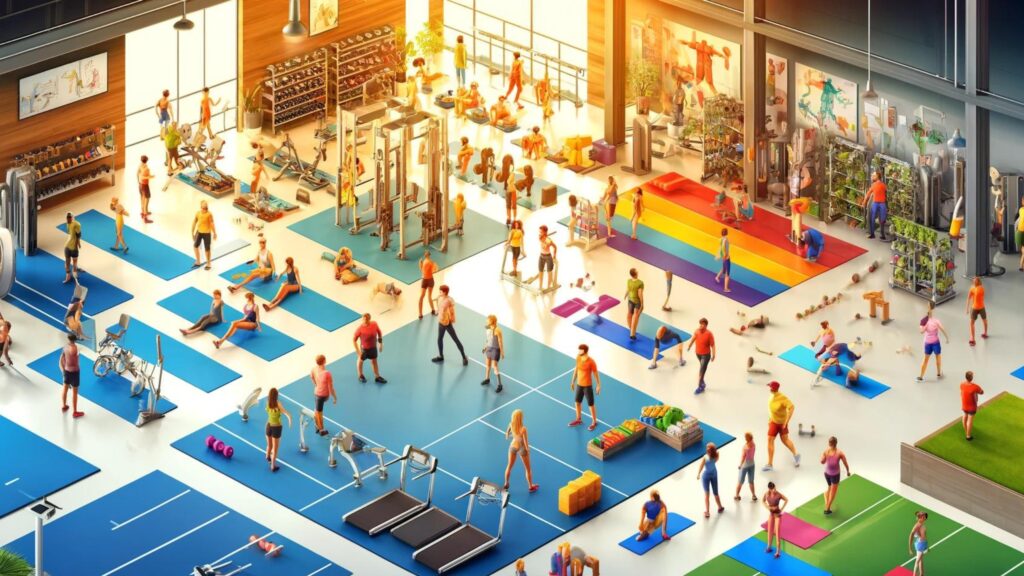
Workout details and planning
How does hydration impact physical fitness?
Hydration is more than just a health necessity; it is the foundation of peak physical performance. Dehydration, even at low levels, can impair stamina, strength, and concentration during workouts. Drinking plenty of fluids before, during, and after exercise helps to keep blood volume stable, regulate body temperature, and speed up muscle recovery. For athletes and fitness enthusiasts alike, staying hydrated is critical to maintaining peak performance and avoiding the negative effects of dehydration, such as muscle cramps and fatigue.
What are some common physical fitness goals?
Individuals’ physical fitness goals vary greatly, but most commonly include improving cardiovascular health, increasing strength, increasing flexibility, losing weight, and building muscle. Achieving these objectives necessitates tailored exercise regimens that address specific areas of fitness using a balanced approach that includes both aerobic and anaerobic exercises. Setting SMART (specific, measurable, achievable, relevant, and time-bound) goals allows individuals to effectively track progress and maintain motivation.
Can physical fitness help to reduce stress?
Physical activity is a highly effective stress reliever. Studies have demonstrated that regular exercise elevates endorphin levels, a natural mood enhancer that alleviates daily stress. Aside from biochemical effects, physical fitness provides a mental break from daily stressors, promotes a sense of accomplishment, and, in communal settings, can provide social support. A consistent fitness routine is not only beneficial but also transformative for those dealing with chronic stress.
What are the best ways to lose weight through fitness?
Effective weight loss through fitness requires a combination of cardiovascular exercises that burn calories and strength training that builds muscle to increase metabolic rate even when resting. High-intensity interval training (HIIT) can increase fat loss and improve cardiovascular health. Consistent and progressive workout intensity and duration, combined with a well-balanced diet, ensure long-term weight loss. It is not about making quick gains, but rather about developing a healthy weight-management lifestyle.
How do you strike the right balance between cardio and strength training?
Balancing cardio and strength training entails scheduling workouts that allow enough time for recovery while maximizing the benefits of both types of exercise. A practical approach could be to alternate between cardio- and strength-focused activities or to combine them in circuit training sessions to improve both endurance and muscular strength at the same time. This not only keeps workouts interesting, but it also improves overall fitness in a more holistic way.
What constitutes safe physical fitness practices?
Safe physical fitness practices are essential for a successful workout regimen. This includes following proper warm-up and cool-down routines, using proper form during exercises, and selecting the appropriate intensity of workouts for one’s fitness level. Understanding body signals and knowing when to rest are critical for avoiding injuries. We should wear personal protective equipment, such as appropriate footwear, to ensure safety while engaging in various types of physical activities.
How frequently should I change my workout routine?
To avoid plateaus and maintain continuous progress, change your workout routine every 4 to 6 weeks. This adjustment can take the form of changing the exercise type, intensity, duration, or frequency. Regular changes to the workout routine not only stimulate different muscle groups but also keep the regimen interesting and challenging, promoting both physical and mental growth.
What is the optimal time of day for physical activity?
The best time for physical exercise depends on your lifestyle, body rhythms, and preferences. Morning workouts can boost metabolism and provide a vibrant start to the day, whereas evening workouts may fit better into some schedules and aid in relaxation. Finally, the best timing is one that fits into your daily routine and ensures consistency in training sessions.
Can I achieve physical fitness without going to the gym?
Achieving physical fitness without a gym is entirely possible. You can perform many types of effective exercise at home or outside, including bodyweight workouts, running, cycling, and yoga. This flexibility not only makes fitness more accessible, but it also allows you to personalize your fitness journey. Individuals can tailor their fitness regimen to their specific needs and preferences using a variety of online resources and fitness apps without ever setting foot in a gym.
What are the indicators of increased physical fitness?
Physical fitness improvements include increased stamina, strength, flexibility, and more consistent energy levels throughout the day. Additional indicators could include a lower body fat percentage, improved sleep quality, and a better ability to cope with stress. As physical fitness improves, these signs become more noticeable, providing tangible evidence of the benefits of a consistent fitness regimen.
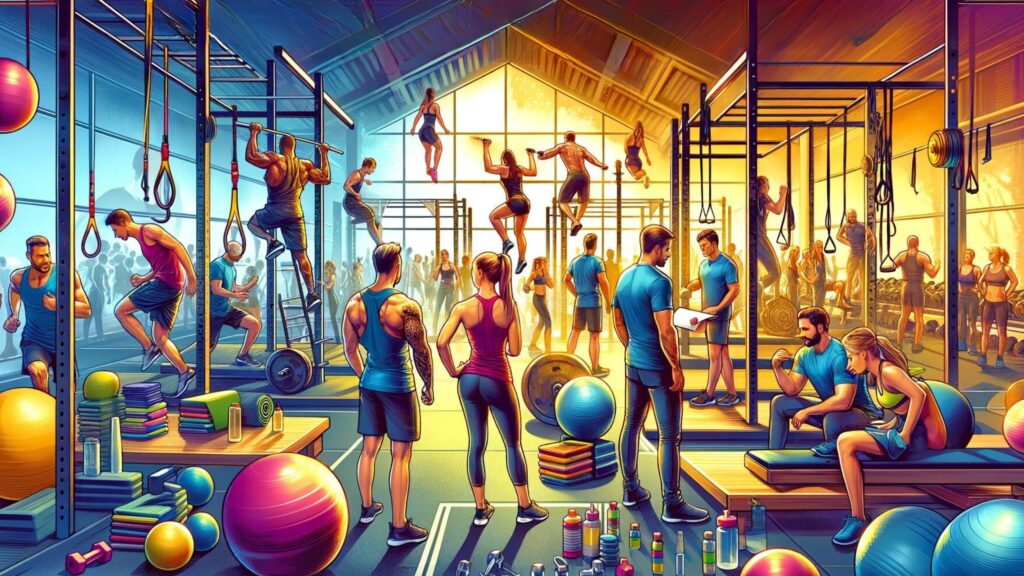
Challenges and Solutions for Fitness
How Can You Break Through Fitness Stalls?
Hitting a fitness plateau is a natural part of any fitness journey. When your progress slows, it’s critical to reenergize your routine by increasing the intensity, varying the types of exercises, or changing the duration of your workouts. Advanced training techniques, such as supersets and pyramid sets, can also help break through these plateaus. Incorporating new activities that challenge different muscle groups or aspects of fitness can reenergize your routine, propelling you past the plateau and closer to your fitness objectives.
What injuries are common in physical fitness, and how do you prevent them?
Overuse or poor form frequently cause common injuries in physical fitness, such as sprains, muscle strains, knee injuries, and tendonitis. Prevention relies on using proper techniques and allowing enough warm-up and cool-down time during workouts. Using the proper equipment and gradually increasing workout intensity allows the body to adapt safely, reducing the risk of injury. Regular rest days, as well as the use of recovery techniques such as stretching or foam rolling, are important in injury prevention.
Is it necessary to have a fitness coach?
While not required, hiring a fitness coach can be beneficial, especially for beginners or those with specific fitness goals. A coach offers personalized guidance, motivation, and accountability, which can significantly improve the efficacy of a fitness program. They can also ensure proper form, technique, and progression, thereby reducing injuries and maximizing results. Individuals seeking to achieve lofty or specialized fitness goals can greatly benefit from a coach’s expertise and personalized attention.
What Are the Best Physical Activities for Older Adults?
Physical activities that help older adults maintain cardiorespiratory fitness, flexibility, and balance are essential. You can tailor walking, swimming, tai chi, and low-impact aerobic exercises to your personal fitness levels, making them excellent choices. Strength training, at least twice a week, is also important because it helps to prevent muscle loss and maintain bone density. These activities not only keep the body physically healthy, but they also help to improve mental health and quality of life.
How does physical fitness impact sleep?
Physical fitness significantly improves the quality of sleep. Studies have demonstrated that regular exercise, especially aerobic activities, enhances both the speed of falling asleep and the depth of sleep. However, timing is critical; engaging in strenuous activities too close to bedtime may have the opposite effect. For the best sleep benefits, exercise in the morning or afternoon, allowing you ample time to relax before bedtime.
Can physical fitness enhance immune system function?
Studies have shown that regular, moderate exercise enhances the immune system by enhancing circulation and facilitating the free and efficient movement of immune system cells and substances throughout the body. Aerobic exercise, strength training, and flexibility workouts can all help to strengthen the body’s immune system.
How long does it take to see results from physical fitness activities?
The time it takes to see results from physical fitness activities varies greatly depending on factors such as starting fitness level, exercise intensity and frequency, and individual health status. A few weeks of consistent activity can yield noticeable improvements in both physical and mental health. A realistic timeline for significant changes in body composition, such as weight loss or muscle gain, could range from three to six months of dedicated effort.
What Are the Best Post-Workout Recovery Techniques?
Effective post-workout recovery techniques are essential for muscle repair, strength development, and overall fitness. These include hydration, proper nutrition, sleep, and active recovery techniques such as light stretching or yoga. Ice baths and contrast water therapy can also help with muscle soreness and recovery. Incorporating these strategies allows the body to return to peak performance levels more quickly, preparing it for future training sessions.
How to Fit Fitness into Your Busy Schedule?
Fitting fitness into a busy schedule requires creativity and dedication. Opt for workouts that are shorter and more intense, like HIIT, with a duration of 30 minutes or less. Use lunch breaks for quick runs or brisk walks. Consider ‘exercise snacking’, which involves spreading out short, intense periods of exercise throughout the day. Workouts in the morning can also prioritize fitness over other daily responsibilities.
- General Fitness Questions
- What are the key components of physical fitness?
- How frequently should I exercise to increase my physical fitness?
- What are the best exercises to improve overall physical fitness?
- Can physical fitness affect mental health?
- What is the ideal duration for a physical fitness session?
- How does aging affect physical fitness?
- What role does diet play in sustaining physical fitness?
- Do you have any quick tips for improving physical fitness?
- What are the risks of excessive exercise?
- How can I assess my physical fitness level?
- What's the difference between aerobic and anaerobic exercise?
- How can I keep myself motivated to stay fit?
- What benefits does stretching have for physical fitness?
- How can beginners increase their physical fitness?
- Is yoga effective for improving physical fitness?
- Which are the best fitness apps and tools?
- Workout details and planning
- How does hydration impact physical fitness?
- What are some common physical fitness goals?
- Can physical fitness help to reduce stress?
- What are the best ways to lose weight through fitness?
- How do you strike the right balance between cardio and strength training?
- What constitutes safe physical fitness practices?
- How frequently should I change my workout routine?
- What is the optimal time of day for physical activity?
- Can I achieve physical fitness without going to the gym?
- What are the indicators of increased physical fitness?
- Challenges and Solutions for Fitness
- How Can You Break Through Fitness Stalls?
- What injuries are common in physical fitness, and how do you prevent them?
- Is it necessary to have a fitness coach?
- What Are the Best Physical Activities for Older Adults?
- How does physical fitness impact sleep?
- Can physical fitness enhance immune system function?
- How long does it take to see results from physical fitness activities?
- What Are the Best Post-Workout Recovery Techniques?
- How to Fit Fitness into Your Busy Schedule?
- Advanced Fitness and Health
- What are the benefits of group fitness classes?
- Which fitness metrics should I track?
- How do I choose the best shoes for fitness activities?
- What role does genetics play in physical fitness?
- How Do I Deal with Gym Intimidation?
- What are the best outdoor exercises for fitness?
- How to Stay Fit During Pregnancy?
- What are the best low-impact exercises for fitness?
- Can strength training improve cardiovascular health?
- Technical aspects and specific exercises
- How effective is interval training for physical fitness?
- What Are the Best Strength Exercises for Beginners?
- How Can I Effectively Track My Fitness Progress?
- What are the fitness considerations for people with disabilities?
- How Do I Avoid Common Mistakes When Starting a Fitness Routine?
- What are the legal supplements for improving physical fitness?
- What should I eat before and after workouts to increase my fitness?
- How does rest affect physical fitness improvement?
- What Are the Best Core Strengthening Exercises?
- Fitness Trends and Additional Tips
- Physical Fitness: The Complete Guide to Beginning Your Journey
- Conclusion
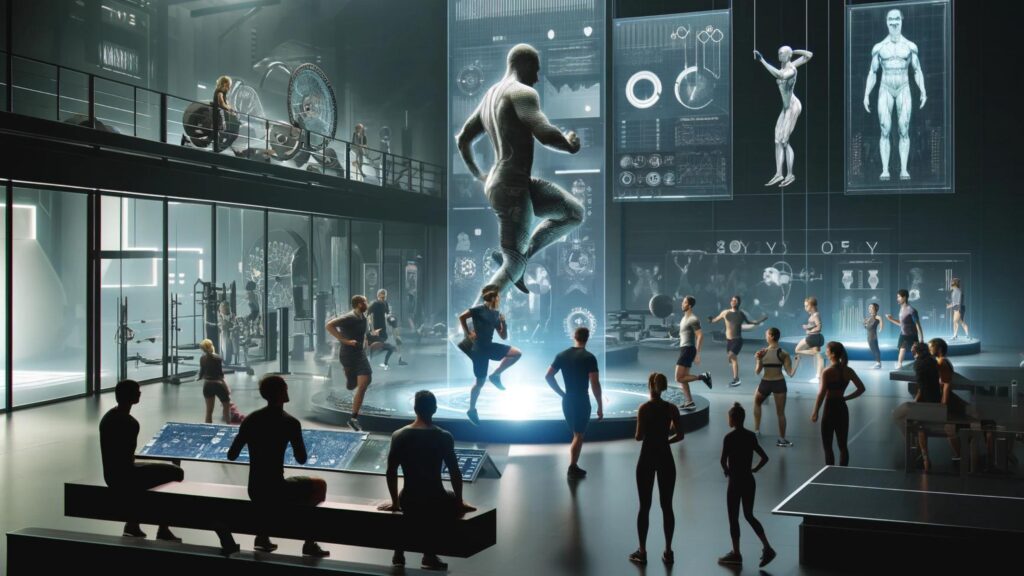
Advanced Fitness and Health
What are the benefits of group fitness classes?
Group fitness classes provide numerous advantages beyond physical fitness. These structured workouts promote a sense of community and accountability, which often boosts motivation due to the inherent social support. Certified instructors guide participants, ensuring the safe and effective completion of exercises. Furthermore, group settings offer a wide range of workout styles, from aerobics and cycling to yoga, catering to all fitness levels and preferences, making it easier for people to find a class that matches their fitness goals.
Which fitness metrics should I track?
Tracking key fitness metrics is critical for accurately monitoring progress and tailoring fitness goals. These include heart rate, calories burned, active minutes, and sleep patterns. More advanced metrics, such as VO2 max and heart rate variability, can provide greater insight into cardiovascular and aerobic health. Tracking the amount of weight lifted over time, as well as the number of repetitions and recovery time, can aid in quantifying strength gains and assessing workout intensity.
How do I choose the best shoes for fitness activities?
Choosing the right footwear is critical to improving performance and avoiding injuries. The selection should be based on the type of fitness activity—running shoes for runners, cycling shoes for cyclists, etc. Proper fit, adequate support, flexibility, and cushioning that is appropriate for your foot type and gait are all important considerations. Consulting with specialists at a sports store can provide personalized advice, ensuring that the footwear meets the specific needs of your workout routine.
What role does genetics play in physical fitness?
Genetics has a significant impact on several aspects of physical fitness, including muscle composition, cardiovascular capacity, and metabolism. While genetics create predispositions, they do not determine fitness or destiny. Individuals can maximize their genetic potential and overcome genetic limitations by following a tailored exercise regimen and nutrition plan, demonstrating that lifestyle choices have a significant impact on one’s physical fitness.
How Do I Deal with Gym Intimidation?
Gym intimidation, also known as “gymtimidation,” can be a formidable barrier to fitness progression. Overcoming this begins with education—learning gym etiquette and becoming familiar with the equipment. Starting with a friend or in a group class can help reduce feelings of isolation. Setting realistic personal goals can also shift the focus away from comparison and toward personal health and well-being. Finally, remember that everyone at the gym is there for the same reason: to improve their health, regardless of their fitness level.
What are the best outdoor exercises for fitness?
Outdoor exercises offer a refreshing alternative to gym workouts by combining fitness and nature. You can tailor running, hiking, and cycling to different fitness levels, all of which are great for cardiovascular health. You can incorporate simple bodyweight exercises like push-ups, squats, and lunges into your park workout. For those who prefer a more structured approach, outdoor boot camps provide a high-intensity, diverse workout that boosts strength, endurance, and flexibility.
How to Stay Fit During Pregnancy?
Maintaining fitness during pregnancy is beneficial to both the mother and the baby, but it necessitates modifying exercise routines to accommodate physiological changes. Swimming, prenatal yoga, and walking are all safe, low-impact activities that keep the body active without overexertion. It is critical to consult with healthcare providers before beginning or continuing any exercise routine during pregnancy to ensure that all activities are safe for the individual’s unique health circumstances.
What are the best low-impact exercises for fitness?
Low-impact exercises are easy on the joints but extremely effective for maintaining fitness. Swimming, elliptical training, cycling, and pilates are all excellent low-impact activities that provide significant cardiovascular and strength training benefits without overworking the body. These activities are ideal for beginners, older adults, and those recovering from injuries, but they can also help seasoned athletes recover.
Can strength training improve cardiovascular health?
Strength training, while traditionally associated with muscle growth, also has significant cardiovascular benefits. Regular strength training exercises raise the heart rate and improve blood circulation, which benefits overall heart health. They also help with weight management, fat percentage reduction, and metabolic rate improvement, all of which are beneficial to cardiovascular health. Integrating strength training into fitness routines offers a comprehensive approach to enhancing both the muscular and cardiovascular systems.
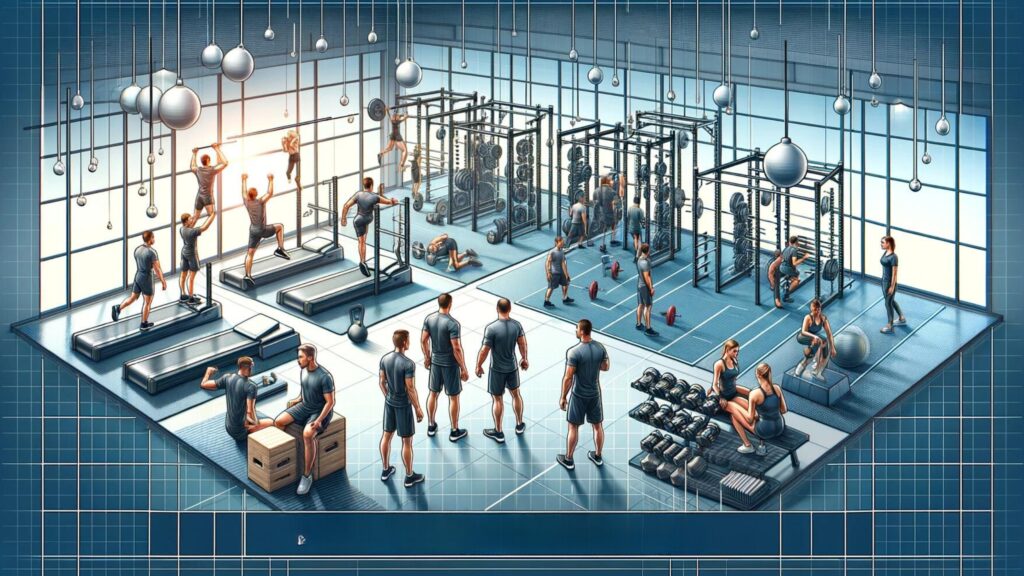
Technical aspects and specific exercises
How effective is interval training for physical fitness?
Interval training, which alternates between high-intensity exercise and low-intensity recovery periods, is extremely effective for rapidly increasing physical fitness. This training method improves both aerobic and anaerobic fitness, speeds up fat burning, and improves cardiovascular health more effectively than moderate continuous exercise. Interval training is adaptable to a variety of fitness levels, providing a dynamic and time-efficient workout that can fit into any busy schedule.
What Are the Best Strength Exercises for Beginners?
For beginners, understanding the fundamentals of strength training is critical. Squats, push-ups, lunges, and planks are fundamental exercises that provide a solid foundation for muscle development and overall strength. These exercises work multiple muscle groups, promote functional fitness, and require minimal equipment. Beginners should focus on proper form and gradual progression to gain confidence and avoid injuries.
How Can I Effectively Track My Fitness Progress?
Tracking fitness progress effectively necessitates a combination of qualitative and quantitative measurements. Fitness tracking devices or apps can help you keep track of your physical activity, heart rate, and calories burned. Keeping a workout journal to record exercises, weights, repetitions, and how you feel can also help you track your progress and stay motivated. Regularly setting and reviewing fitness goals can help you stay on track and motivated.
What are the fitness considerations for people with disabilities?
Fitness considerations for people with disabilities include ensuring accessibility, tailoring exercises to individual abilities, and emphasizing inclusivity. Adaptive sports and fitness programs tailored to specific disabilities can help meet these needs. Professional guidance from trained instructors who understand the unique challenges that people with disabilities face is essential for developing an effective and safe fitness routine.
How Do I Avoid Common Mistakes When Starting a Fitness Routine?
To avoid common mistakes when beginning a fitness routine, start with clear, attainable goals and gradually increase exercise intensity and frequency. Many beginners begin with too much intensity or volume, which can result in injury or burnout. Learn proper form and techniques, perhaps through professional instruction, to ensure effective and safe workouts. Furthermore, ignoring nutrition and recovery can jeopardize fitness efforts, so it is critical to incorporate these components from the start.
What are the legal supplements for improving physical fitness?
Protein powders, creatine, branched-chain amino acids (BCAAs), and beta-alanine are legal supplements that can help you improve your physical fitness. These supplements promote muscle repair, increase energy production during workouts, and improve endurance and performance. However, one must use these supplements responsibly and ideally under the supervision of a healthcare professional to ensure their safety and effectiveness.
What should I eat before and after workouts to increase my fitness?
Eating the right foods before and after a workout can greatly improve performance and recovery. Pre-workout, consume carbohydrates for energy and a small amount of protein to prevent muscle breakdown. A banana with peanut butter or a small smoothie can be perfect. After a workout, the focus should shift to protein and carbohydrates to aid in muscle recovery and glycogen replenishment, such as a lean chicken breast and quinoa or a protein shake.
How does rest affect physical fitness improvement?
Rest is essential for physical fitness improvement because it allows the body to repair and strengthen itself in between workouts. Inadequate rest can lead to overtraining syndrome, which can stymie fitness progress and cause injuries. Incorporating adequate sleep and active recovery days into your fitness plan promotes a balanced approach that maximizes fitness level improvements.
What Are the Best Core Strengthening Exercises?
The best core strengthening exercises include more than just crunches; they also stabilize and engage the entire trunk. Planks, Russian twists, bicycle crunches, and leg raises are great for developing core strength and stability. These exercises improve not only postural alignment and overall strength, but also daily functionality and athletic performance.
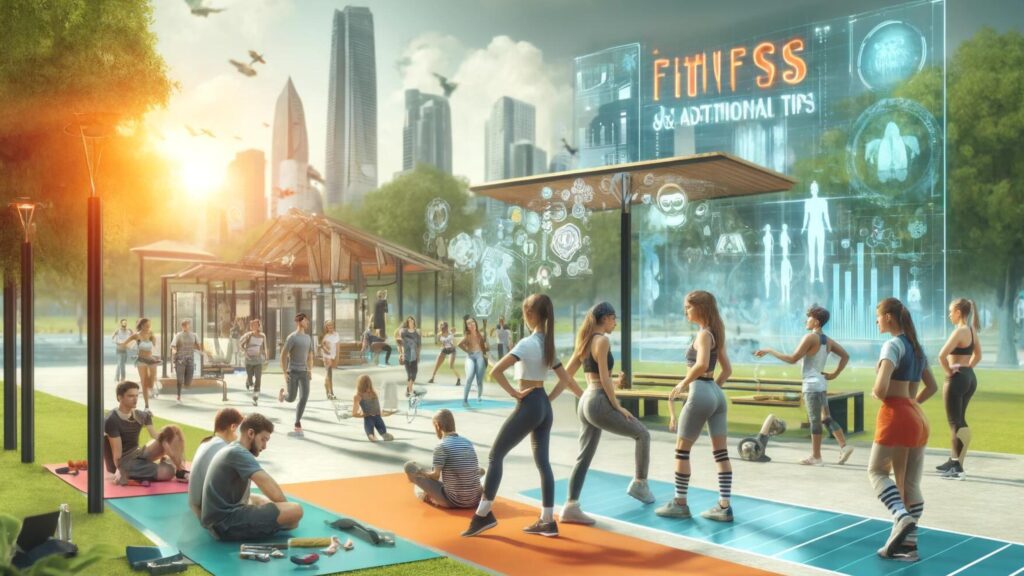
Fitness Trends and Additional Tips
How do I set realistic fitness goals?
Setting realistic fitness goals entails evaluating your current fitness level and establishing specific, attainable objectives. Begin by identifying specific, measurable goals, such as covering a certain distance in a few months or losing a certain amount of weight. To stay motivated, incorporate short-term milestones and adjust your goals as you progress. Effective goal-setting not only keeps you motivated, but it also lowers your risk of injury from pushing too hard or too fast.
What is functional fitness, and why is it important?
Functional fitness teaches your muscles to work together and prepares them for daily tasks by simulating common movements you might perform at home, at work, or in sports. This approach improves coordination, balance, and endurance. It is significant because it aims to improve your quality of life by making daily activities easier, lowering your risk of injury, and boosting your overall health.
How Can I Avoid Injury During High-Intensity Workouts?
To avoid injuries during high-intensity workouts, each session should begin with a proper warm-up and conclude with a cool-down period to prepare your muscles and increase flexibility. Ensure that you are performing each exercise with proper form and technique, gradually increasing the intensity of your workouts, and listening to your body by taking breaks or modifying exercises as needed.
What are the psychological benefits of engaging in regular physical activity?
Regular physical activity can boost your mood, reduce depression, stress, and anxiety, and improve your overall mental health. Regular exercise promotes overall well-being by increasing the production of endorphins, the brain’s “feel-good” neurotransmitters. It can also improve self-esteem and cognitive function.
How Does Physical Fitness Affect Lifespan?
Regular physical activity can help you live longer by lowering your risk of developing chronic diseases like heart disease, obesity, diabetes, and high blood pressure. Maintaining a healthy weight, building muscle strength, and improving heart and lung function all directly contribute to increased longevity through exercise.
What are the effects of smoking and alcohol on physical fitness?
Smoking and drinking excessively can have a negative impact on physical fitness. Smoking reduces lung capacity and disrupts the efficient transport of oxygen throughout the body, whereas alcohol dehydrates the body and impairs its ability to build muscle. These habits, when combined, can impair physical performance and cause exercise recovery to take longer.
How Do I Balance Strength and Flexibility Training?
Strength and flexibility training should include a variety of exercises that promote muscle growth and improve muscle elasticity. On alternate days, schedule strength training sessions for different muscle groups, and end each workout with flexibility exercises like yoga or static stretching. This method prevents injuries and covers every facet of fitness.
What are the top fitness programs for weight loss?
To maximize fat loss and muscle maintenance, the best weight-loss fitness programs combine cardiovascular and strength-training exercises. Circuit training, boot camps, and interval training are all effective ways to burn a lot of calories while building muscle. Consistency and proper nutrition are essential components of any successful weight-loss plan.
How Do I Begin a Fitness Routine if I’ve Never Exercised?
Setting attainable goals and creating a manageable schedule are the first steps in getting into a fitness routine. To build endurance and confidence, start with low-intensity activities like walking, light jogging, and beginner yoga classes. As your fitness improves, gradually increase the intensity and variety of your exercises, and consult with a fitness professional to ensure proper technique and progression.
What are the advantages of high-intensity interval training (HIIT)?
High-intensity interval training (HIIT) has a number of advantages, including improved cardiovascular health, increased calorie burn during and after workouts, and lower body fat. This effective training method can produce significant fitness gains in shorter sessions, making it ideal for people with busy schedules.
Can fitness trackers enhance physical fitness?
Fitness trackers can significantly improve physical fitness by providing continuous feedback that encourages you to meet your daily activity goals. These devices monitor steps, heart rate, sleep patterns, and calories burned, providing information that can help you improve your workouts and recovery. Their use promotes increased activity and improved health monitoring.
What Exercises Are Best for Cardiovascular Health?
Exercises that promote cardiovascular health include brisk walking, running, cycling, swimming, and aerobics. These activities strengthen the heart and lungs, improve circulation, and lower the risk of cardiovascular disease, stroke, and hypertension.
How to Choose the Right Sports Bra for Workouts?
Choosing the right sports bra is essential for comfort and support during exercise. When selecting a sports bra, keep your exercise’s level of impact in mind; high-impact sports require more support to reduce movement and discomfort. To ensure the best performance and comfort, choose bras with good coverage, adjustable straps, moisture-wicking fabric, and a snug fit that does not obstruct breathing.
Physical Fitness: The Complete Guide to Beginning Your Journey
Starting your physical fitness journey can be life-changing, but it can also be overwhelming if you don’t know where to start. We aim to simplify the process by offering clear instructions and practical advice, enabling you to successfully integrate fitness into your daily routine.
Step 1: Define your fitness goals.
Clarification: Begin by determining what you hope to achieve. Do you want to lose weight, gain muscle, increase endurance, or simply improve your health? Setting specific, measurable goals will help you plan your workouts and track your results.
For example, if you want to lose weight, you could set a goal of losing 10 pounds in three months by combining aerobic exercise and dietary changes.
Step 2: Consult with a healthcare professional.
Clarification: Before beginning any new exercise routine, consult with your healthcare provider, especially if you have any pre-existing health conditions or concerns.
For example, a doctor can advise you on any limitations you should be aware of and recommend exercise types that are both safe and effective based on your health profile.
Step 3: Select the Right Exercise
Clarification: Choose exercises that will help you achieve your fitness goals while also being enjoyable. A well-rounded fitness regimen can include a combination of cardiovascular, strength training, and flexibility exercises.
Example: Jogging, cycling, and swimming are all good cardiovascular-health activities. Weightlifting or bodyweight exercises like push-ups and squats can help you gain strength.
Step 4: Plan Your Workout Schedule.
Clarification: Determine how frequently and for how long you should exercise based on your goals and lifestyle. Consistency is key, so incorporate workouts into your daily routine in a sustainable manner.
Plan to exercise four times a week for 30 minutes each time. Choose times of day when you feel the most energetic, such as in the morning before work or during lunch breaks.
Step 5: Gather the necessary equipment and attire.
Clarification: Make sure you have the proper gear for your chosen activities, which may include athletic shoes, comfortable clothing, and any sport-specific equipment such as weights or a yoga mat.
For example, if you jog regularly, invest in a good pair of running shoes and consider moisture-wicking fabrics to keep you comfortable and dry.
Step 6: Begin slowly and build gradually.
Clarification: Start with low-intensity exercises and gradually increase the intensity and duration to avoid injuries and improve endurance.
For instance, if you’re new to jogging, start off by walking quickly, then alternate between walking and jogging, gradually increasing the duration of your jogging sessions.
Step 7: Monitor your progress.
Clarification: Keeping track of your progress is critical for staying motivated and making changes to your exercise routine. To track your workouts and any changes in your body or fitness level, use fitness apps or a journal.
Example: Keep track of each workout, noting the type, duration, and how you felt afterwards, to see how your stamina and strength improve over time.
Step 8: Stay hydrated and eat properly.
Clarification: Proper nutrition and hydration are essential for fitness. Drink plenty of water and eat a well-balanced diet high in proteins, carbohydrates, and healthy fats to help you exercise.
Drink water before, during, and after your workout. Incorporate lean proteins and whole grains into your meals to help your body function and recover.
Step 9: Be patient and adjust as needed.
Clarification: Achieving fitness goals requires time and perseverance. Be patient with your progress and modify your fitness regimen as you learn more about your body’s reactions to various exercises.
For example, if you find certain workouts too easy or too difficult, you can adjust the intensity or try new activities to keep yourself challenged.
Step 10: Seek support and motivation.
Clarification: Having a support system can significantly increase your motivation and commitment. Join a fitness class, find a workout buddy, or share your goals with friends and family to hold yourself accountable.
Enroll in a local fitness class to meet others who share your goals, or schedule regular workouts with a friend to stay motivated.
Conclusion
Physical fitness is more than just transforming your body; it’s about improving your life. This guide provides you with the tools and knowledge you need to start a journey that will have an impact on every aspect of your health, not just the gym. Embrace the beginning of a healthier, more empowered you. Discover more about your fitness journey by reading our related posts; find inspiration and start today!

